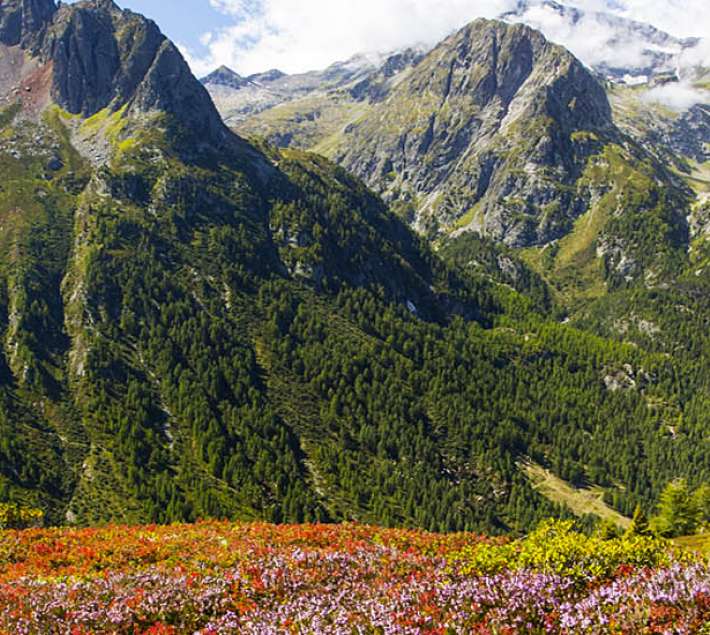Last year I went out to run the Bob Graham Round - solo. I failed.
This is not a story about how I failed but really I succeeded; about finding a greater meaning; about failure being a state of mind or about how the only failure is the failure to try; this is just a story about failing.
For those very few people in the world who don’t know, the Bob Graham Round is a very big circle that people in the Lake District, England, like to run around. It includes 42 rather random summits, 28,000ft of ascent (and descent) and was first run by a man in plimsolls with a scotch egg in the pocket of his pyjamas (which for some reason he was wearing at the time). The challenge is to manage all this in under 24 hours (the scotch egg and pyjamas are optional).
Last year I failed because it was too hard for me; because I wasn’t ready; because I didn’t prepare well enough; because I didn’t train hard enough. I have run the Bob Graham before; I know what it takes to get round; I know that I can do it. But solo was harder in so many little ways that I had not truly imagined. The pack was heavier, the ground was wetter, the wind over Skiddaw was colder and hung onto me with a wetness I couldn’t escape. Hare Crag was a bog that sucked at my shoes until I was knee deep in cold peat bog, the Caldrew river was thigh deep where it is usually a shallow stream, and Hall's Fell Ridge was slick with the grease of not-quite-rain.
And then there were the Dodds. Rounded, indistinct hills that in daylight and good visibility are benign, barely peaks at all. But covered in a nighttime mist that ate the light from my head-torch, and left me with my hands too full of map and compass to manage food. The Dodds ate me up in a dense, sodden, timeless loneliness of an unexpectedly cold July night.
Above all else what made the round harder than the last time, and harder than I expected, was the absolute loneliness. I run alone at night a lot – I had spent the winter heading out on dark nights in the snow and rain, coming home often after midnight feeling like I had some how stolen time that I was not supposed to have. Yet being on the Dodd’s that July night, questioning my compass, feeling sick at the thought of food was just plain lonely. I knew the Round was over well before the night was over, and well before I was any where near being able to stop. I still had to get back to the car.
Three cold hours later I had finally crossed the Dodds, and gone over Helvellyn and dropped out of the cloud. The car lights I watched judder across Dunmail Raise finally broke the isolation – the first moving thing, the first change of view I had seen since I started up Clough Head some time yesterday. I found a picnic rug in my van and slept till the sickness passed and I could drive home – then got into bed still wet and muddy and didn’t even wake as the kids crashed their way through the morning and off to school.
Apart from discovering that I’m not quite as tough (yet) as I thought – I did learn a few other things from failing to run a solo Bob Graham: First, other people just don’t care. My friends sent me messages and congratulations and wine; they were impressed and apparently inspired and however much I kept saying ‘but I didn’t actually DO it’ the difference between achieving it and trying it seemed like a mere detail, hardly big enough to be noticed and certainly not worth worrying about. For everyone else the difference between running 64 miles with 8000m of ascent and trying to run 64 miles and 8000 meters of ascent is just not that significant. So what I learned is that if I want to impress my friends, get lots of attention (and wine) all I need to do is set grand targets, ridiculous goals and then fail to reach them. Which in truth is probably a lot easier than achieving them - so next year I am thinking of becoming Prime Minister, running the coast to coast and winning the Great British Bake Off (and doing a solo Bob Graham).
Second, when my husband suggested leaving the van at Dunmail ‘just in case’ he was right (he usually is, he made me say that). Third – to fail feels bad. I told myself off - I didn’t train enough, I didn’t train in the right ways, I didn’t prepare enough, I didn’t pack the right food, I made a lot of mistakes, I got lost – (yet I can navigate well) - I got a cold, (because I wasn’t focused enough to keep my clothes dry when I waded an early river), I was tired because I hadn’t rested enough – but mostly I just hadn’t tried enough. And that is what really felt like a failure; but I know how to change that.
Failure wasn’t glorious; it wasn’t success in another form. It was just wet cold failure. But when failure became something to do and nothing to fear, what bold, ridiculous adventures am I able to imagine that are (maybe) possible, (maybe) worth trying and (maybe) worth failing at?
When Kate is not lost in the mountains of the Lake District she is an Impact Associate, Commercial Director of Wasafiri Consulting and an occasional blogger.
